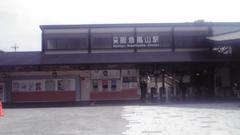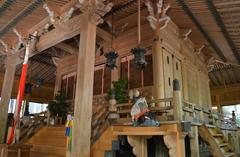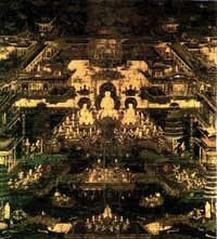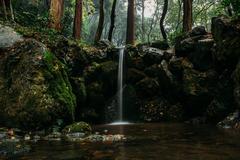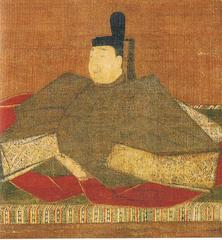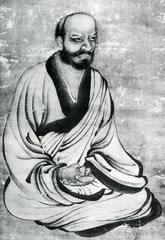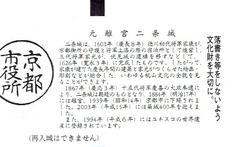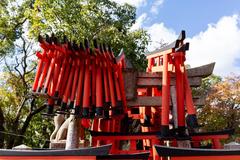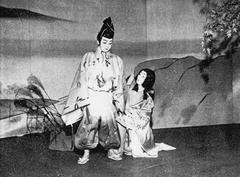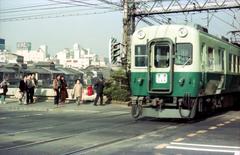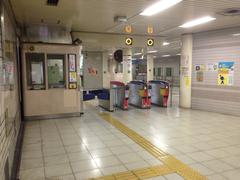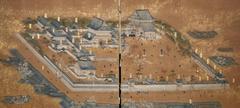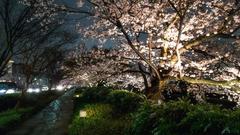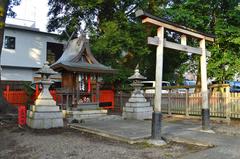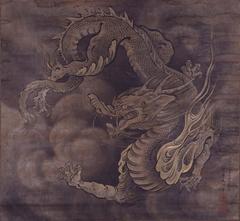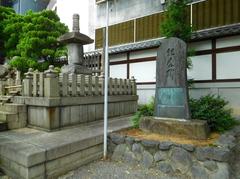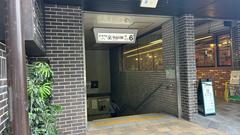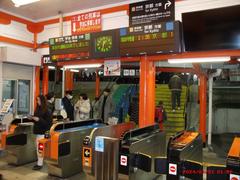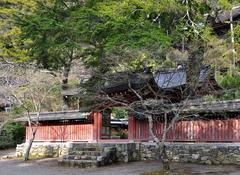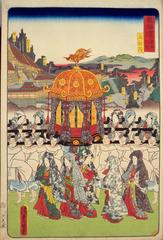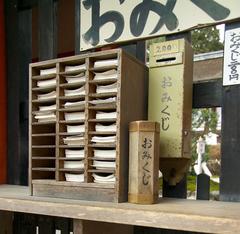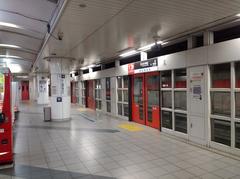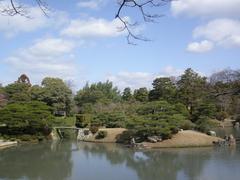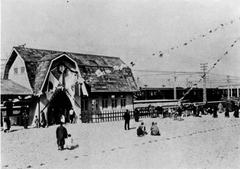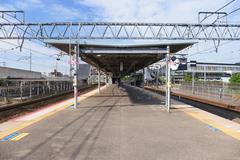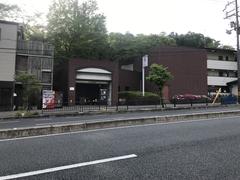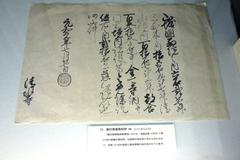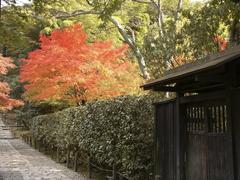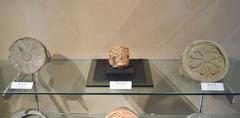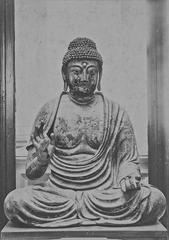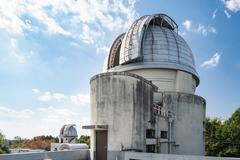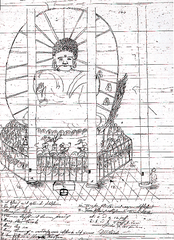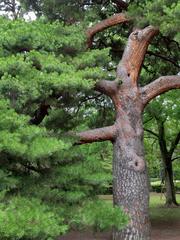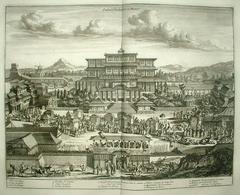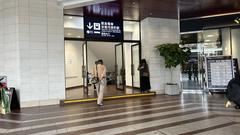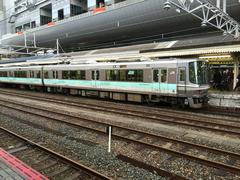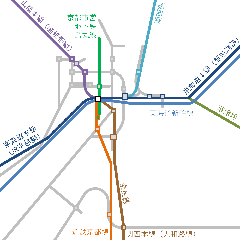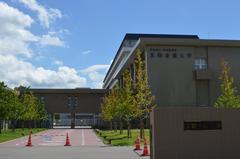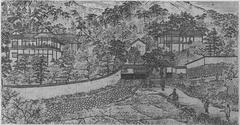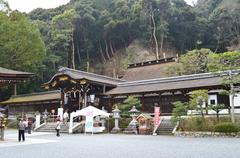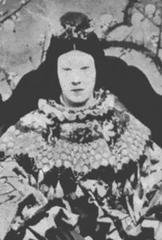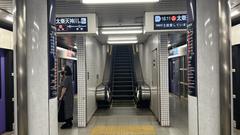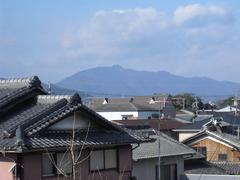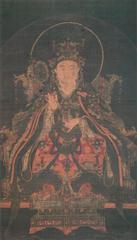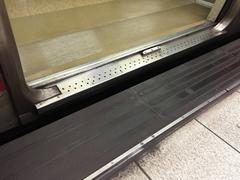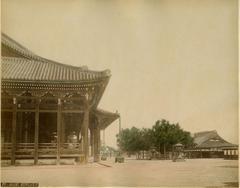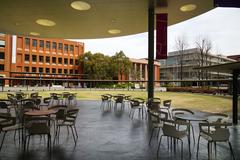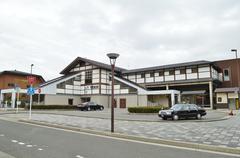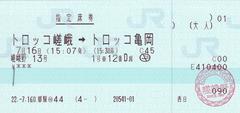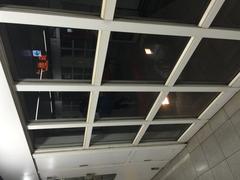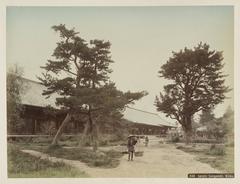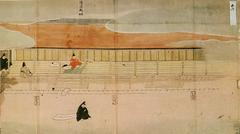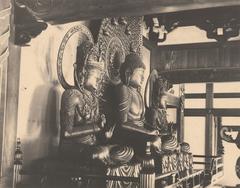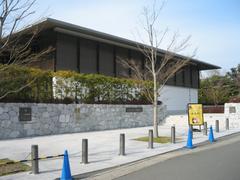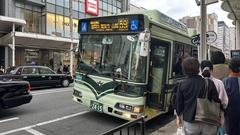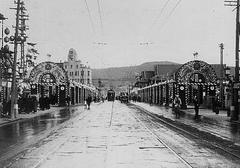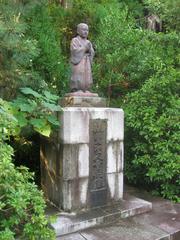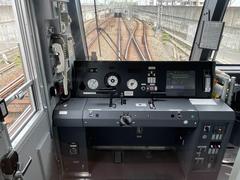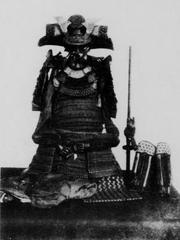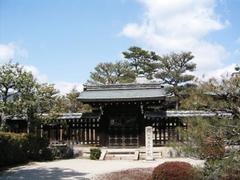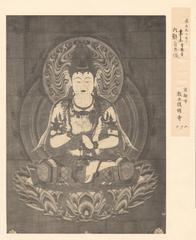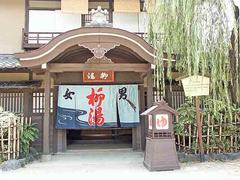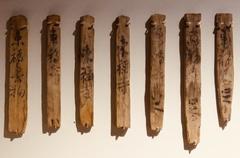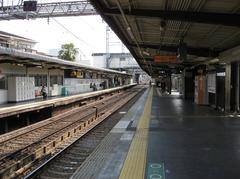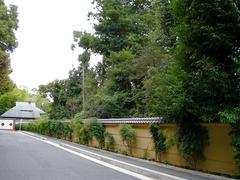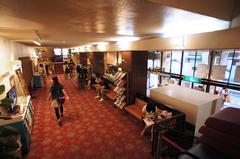
Uzumasa Tenjingawa Station, Kyoto: Visiting Hours, Tickets, and Nearby Attractions
Date: 15/06/2025
Introduction
Uzumasa Tenjingawa Station is a key gateway in western Kyoto, seamlessly blending urban transit convenience with deep historical and cultural resonance. Serving as the western terminus of the Kyoto Municipal Subway Tozai Line, the station enables efficient east-west travel and connects visitors to some of the city’s top attractions, including Toei Kyoto Studio Park and the scenic Arashiyama district. Uzumasa—often called Kyoto’s “Hollywood” for its film industry legacy—makes the station a pivotal hub for both daily commuters and tourists eager to experience Kyoto’s traditional and contemporary culture.
Since its opening in 2008, Uzumasa Tenjingawa Station has played a vital role in Kyoto’s transportation network, catalyzing urban revitalization in Ukyō Ward. The station is directly linked via an underground passage to Randen-Tenjingawa Station on the Keifuku Electric Railroad’s nostalgic tram line, facilitating easy access to historic sites throughout western Kyoto (Japan Metro; Kyoto Station Guide).
With modern amenities such as multilingual signage, barrier-free accessibility, and compatibility with popular IC cards like ICOCA and Suica, Uzumasa Tenjingawa Station ensures a comfortable travel experience for all. Its proximity to major attractions and integration with bus and tram lines make it an essential stop for exploring Kyoto’s cultural tapestry. This guide provides a comprehensive look at the station’s history, facilities, ticketing information, transit connections, and surrounding highlights to help you plan an enriching visit (Japan Experience; Japanese Wiki).
Contents
- Historical Background
- Station Layout & Facilities
- Visiting Hours, Ticket Information, and Travel Tips
- Transportation Options & Connections
- Attractions Near Uzumasa Tenjingawa Station
- Seasonal Events, Markets, and Local Experiences
- Frequently Asked Questions (FAQ)
- Plan Your Visit
1. Historical Background
Kyoto’s postwar urban growth led to the development of rapid transit networks to ease congestion and support the city’s population and tourism. The Karasuma Line opened in 1981 as Kyoto’s first subway, followed by the Tozai Line in 1997, connecting Daigo Station to Nijō Station (Japan Metro; TransportWiki). Uzumasa Tenjingawa Station was inaugurated in 2008 as the Tozai Line’s western terminus, extending the line to 17.5 km and marking the first subway station in Ukyō Ward (Japanese Wiki).
The station’s establishment was part of a larger urban renewal, integrating new civic facilities and expanding Kyoto’s bus and tram networks. A public survey combined local area names “Uzumasa” and “Tenjingawa” for the station’s final name, reflecting community involvement and regional identity.
Technologically advanced with features such as automatic train operation, platform barriers, and universal accessibility, the station set high standards for safety and inclusivity (Japan Metro). Its opening bolstered local economic activity, increased ridership, and strengthened connections to Kyoto’s historic and cultural sites.
2. Station Layout & Facilities
Structure and Transfer Points
- Location: Underground beneath Uzumasa-Tenjingawa Street in Ukyō Ward.
- Platform: Single wide island platform serving two tracks, equipped with full-height safety screen doors.
- Entrances/Exits: Multiple, all with barrier-free access via elevators and ramps.
- Transfer: Direct underground corridor connects to Randen-Tenjingawa Station on the Keifuku Electric Railroad’s Arashiyama Line.
Amenities
- Multilingual Signage: Japanese, English, Chinese, and Korean.
- Ticketing: Automated machines accept cash and IC cards (ICOCA, Suica, PASMO, etc.).
- Restrooms: Clean, accessible, with baby care facilities.
- Coin Lockers: For luggage storage.
- Shops & Vending: Kiosk and beverage machines.
- Wi-Fi & Charging: Free Kyoto Wi-Fi and limited device charging stations.
- Safety: CCTV, emergency intercoms, AED devices, tactile paving.
3. Visiting Hours, Ticket Information, and Travel Tips
Operating Hours
- Subway Service: Daily from approximately 5:30 AM to midnight. Check the official Kyoto Subway schedule for specific first/last trains.
Ticket Options
- Single-Ride Tickets: Starting from 210 yen, depending on distance.
- IC Cards: ICOCA, Suica, PASMO, and others accepted for seamless transfers.
- Day Passes:
- Kyoto Municipal Subway One-day Pass: 600 yen (adults), 300 yen (children).
- Kyoto City Bus & Subway One-day Pass: 1,100 yen (adults), 550 yen (children) (Matcha).
How to Purchase
- Use station vending machines (multilingual).
- IC card top-ups available at machines or station office.
- Mobile apps support IC card management and ticket purchase.
Travel Tips
- Avoid Peak Hours: 7:30–9:00 AM and 5:00–7:00 PM.
- Luggage: Use station coin lockers, especially before taking the Randen tram (limited space).
- Accessibility: Elevators, tactile paving, and staff support available.
- Navigation: Download English subway maps or use apps like Jorudan/Navitime for real-time planning.
4. Transportation Options & Connections
Kyoto Municipal Subway Tozai Line
- Route: Rokujizō Station (southeast) to Uzumasa Tenjingawa (west), serving 17 stations across major sightseeing districts (Japan Experience).
Keifuku Electric Railroad (Randen) Tram Line
- Randen-Tenjingawa Station: Direct transfer via underground corridor.
- Destinations: Arashiyama, Kinkaku-ji, Ninna-ji, Ryoan-ji (Kyoto Station Guide; Matcha).
JR Sagano Line
- Route: Kyoto Station → Nijo Station (JR), then transfer to Tozai Line for Uzumasa Tenjingawa (Kyoto Station).
Bus and Taxi
- Kyoto City Bus/Kyoto Bus: Serve the station with routes to Kinkaku-ji, central Kyoto, and other neighborhoods (Kyoto City).
- Taxi Stand: Located outside the station for convenient rides.
5. Attractions Near Uzumasa Tenjingawa Station
Toei Kyoto Studio Park (Toei Uzumasa Eigamura)
- Hours: 9:00 AM–5:00 PM (last admission 4:30 PM; check official site for variations).
- Tickets: Adults ¥2,400, children ¥1,200 (discounts online) (Global Toei Eigamura).
- Highlights: Edo-period film set, samurai & ninja shows, costume rentals, interactive exhibits.
Arashiyama & Sagano Districts
- Access: Via Randen tram.
- Sites: Bamboo Grove, Togetsukyo Bridge, Tenryuji Temple, Iwatayama Monkey Park, Hozugawa River Boat Ride.
Nijo Castle
- Subway Access: Tozai Line, Nijojo-mae Station.
- Hours: 8:45 AM–5:00 PM (last entry 4:00 PM).
- Tickets: Adults ¥1,030.
Kyoto Railway Museum
- Access: 20 minutes by subway and bus.
- Hours: 10:00 AM–5:30 PM.
- Tickets: Adults ¥1,200, children ¥500.
Kyoto International Manga Museum
- Access: Tozai Line eastbound.
- Hours: 10:00 AM–6:00 PM (closed Wednesdays).
- Tickets: Adults ¥800, high school students ¥300.
Kaikonoyashiro Shrine
- Short walk from the station; tranquil local shrine known for seasonal festivals.
6. Seasonal Events, Markets, and Local Experiences
- Kobo-san Market: 21st monthly at To-ji Temple.
- Tenjin-san Market: 25th monthly at Kitano Tenmangu Shrine.
- Chion-ji Temple Handicraft Market: 15th monthly.
- Festivals: Nagoshi no Harae (summer purification), Ajisai Matsuri (hydrangea festival).
- Local Dining: Sample Kyoto cuisine, ramen, and izakaya in the Uzumasa area.
7. Frequently Asked Questions (FAQ)
Q: What are the operating hours of Uzumasa Tenjingawa Station?
A: Approximately 5:30 AM to midnight; matches subway hours.
Q: What ticket options are available?
A: Single-ride tickets, IC cards (ICOCA, Suica, PASMO), and day passes.
Q: How do I transfer to the Randen tram?
A: Use the underground passage to Randen-Tenjingawa Station; the transfer is quick and sheltered.
Q: Is the station accessible for travelers with disabilities?
A: Yes, barrier-free facilities including elevators, tactile paving, and accessible restrooms are provided.
Q: How do I reach Arashiyama?
A: Board the Randen tram from Randen-Tenjingawa Station.
Q: When is the best time to visit?
A: Spring (cherry blossom) and autumn (fall foliage) are most scenic; June offers lush greenery and fewer crowds.
Q: Are guided tours available at local attractions?
A: Yes, sites like Nijo Castle and Toei Kyoto Studio Park offer guided tours (inquire on official sites).
8. Plan Your Visit and Final Tips
- Ticketing: Use IC cards or day passes for convenience and savings.
- Travel Apps: Download the Audiala app for real-time transit updates and itinerary planning.
- Luggage: Store large bags in station coin lockers, especially before taking the Randen tram.
- Accessibility: The station is fully equipped for travelers with mobility needs.
- Travel Season: For the most enjoyable experience, visit during spring or autumn but prepare for crowds during peak times.
Visuals
- Image: Uzumasa Tenjingawa Station Entrance with clear bilingual signage (alt=“Uzumasa Tenjingawa Station Entrance featuring bilingual signs in Japanese and English”)
- Image: Island platform with platform screen doors at Uzumasa Tenjingawa Station (alt=“Spacious island platform with safety screen doors at Uzumasa Tenjingawa Station”)
- Image: Transfer corridor between Uzumasa Tenjingawa and Randen Tenjingawa Stations (alt=“Underground transfer passage connecting Uzumasa Tenjingawa and Randen Tenjingawa Stations”)
Official Sources and Further Reading
- Japan Metro, 2024, Kyoto Municipal Subway Overview
- Japanese Wiki, 2024, Uzumasa Tenjingawa Station
- Kyoto Station Guide, 2024, The Keifuku Randen Tram Line
- Japan Experience, 2024, Getting Around Kyoto: Tozai Line
- Kyoto Station, 2024, JR Sagano Line and Transfers
- Matcha, 2024, Kyoto Tram and Rail Lines
- Inside Kyoto, 2024, Kyoto Subway Guide
- Keifuku Electric Railroad, 2024, Randen Line Official Page
- Global Toei Eigamura, 2024, Toei Kyoto Studio Park












